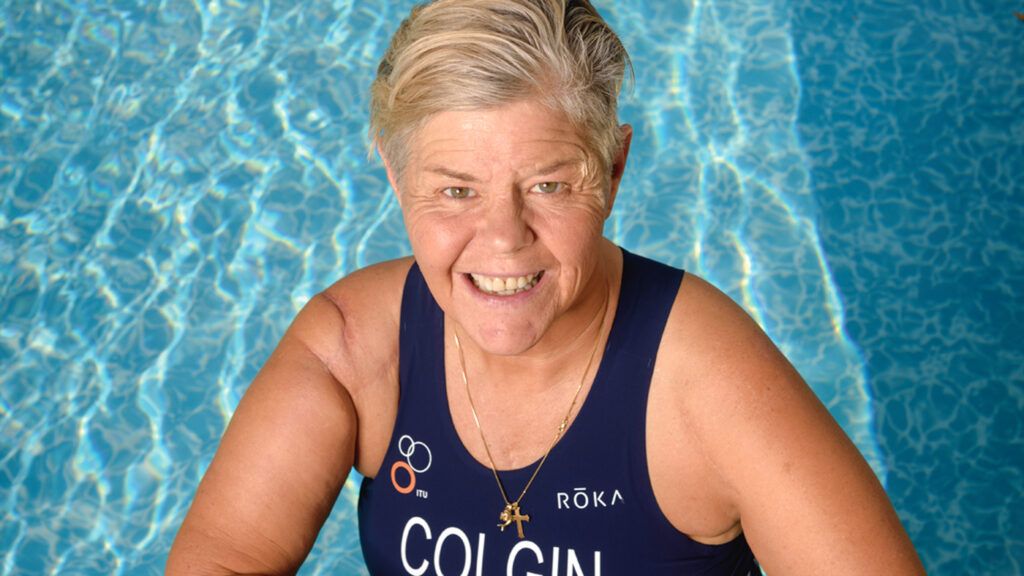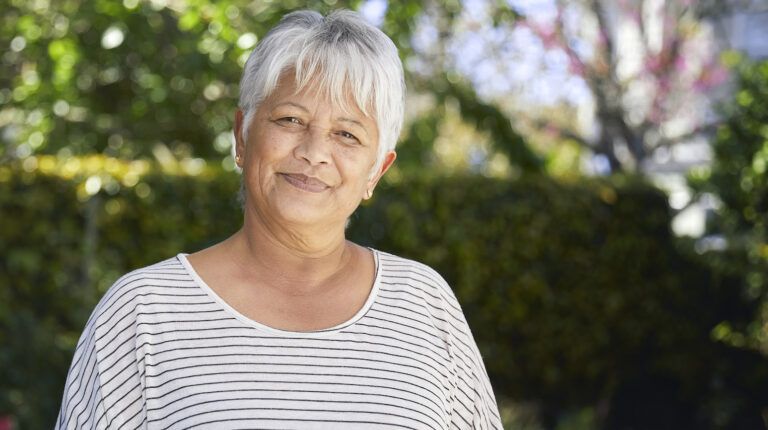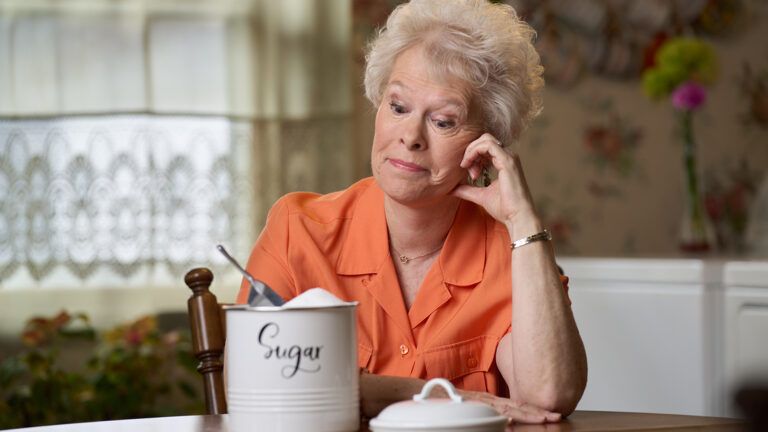You’re our last hope,” the marine’s mother told me. “If he can’t do this, I’m afraid he’ll…” Her voice trailed off, but I knew what she feared.
At 23, her son had suffered a spinal injury in combat, leaving the use of his arms and legs extremely limited. She’d brought him here, to the Lakeshore Foundation rehabilitation center in Birmingham, Alabama, in hopes of finding some physical outlet. Could I teach him to swim? “He’s terrified he’ll drown,” she said.
She introduced me to him. His core body was still strong, but I saw the fear in his eyes. I knew it wasn’t the water he was most afraid of. It was moving on to a different kind of life than he’d imagined.
“You’ll have to trust me,” I said. “Can you do that?”
He nodded, uncertainly. I helped him into the water, faceup, and put my arms underneath him. His body trembled. “Don’t let go of me!” he said.
“It’s okay,” I said. “I’m right here. Take a deep breath. All you need to do to float is relax.”
Slowly his body stopped shaking and his breathing normalized. “I’m going to let go,” I said. I pulled my hands away. He was floating. He looked at me, his eyes filled with wonder. On the pool deck, his mother was crying.
I was in high school when i knew I wanted to be a doctor. Not just any physician. I was going to be a hand surgeon, specializing in microsurgery and reconstruction. The work was demanding, intense. Both my parents were driven, but it was my mother who inspired me most. She’d been a chemist, working for rocket pioneer Wernher Von Braun, then later for the U.S. Department of Defense. She taught me that God had a plan for my life but that nothing got handed to us. “He gives us talents, but what we do with them is up to us” was how she put it. What I heard was: You need to work your tail off. Always.
Skip ahead twenty years, to 1993. I had my own practice in Birmingham. On a typical day, I spent 10 to 12 hours in the operating suite, peering through a pair of surgical loupes, reconnecting veins, nerves and tissues, my every movement requiring absolute care and precision. The board that listed that day’s patients was filled to overflowing, people coming from hundreds of miles to see me. It was everything I’d ever dreamed of and prayed for. I was helping people, giving them a second chance at life. This was what I was meant to do.
One time, I’d operated for 24 hours straight, reattaching a man’s hand. I’d reattached fingers so that you’d barely know they’d been severed. Taken a toe and transformed it into a working thumb. Teamed with another reconstructive surgeon to remove a forearm bone and give a man with cancer of the mouth a new jaw. Helped hundreds of people with cartilage tears and carpal tunnel damage. On top of all that, I was on call at the hospital. 24/7. Nearly every day. I didn’t mind. I couldn’t imagine doing anything else. All I wanted was to work, work, work. Yet work energized me so much, I couldn’t wind down.
So I went running, three or four miles, twice a day. Feeling that burn, sweat pouring off me, heart pounding, was the closest thing to relaxation I could find. I loved knowing I was in shape. Those early-morning runs were when I felt closest to God. There were days, though, when even running didn’t do it for me—I was so wound up.
That’s when I went roaring down Alabama’s winding back roads on my Suzuki Boulevard. In winter, I’d go skiing. (Yes, there’s skiing in the South.) Hurtling down a double black diamond slope one Saturday, going way faster than I should have been, I wiped out and busted my knee. “No running,” my doctor said. “Don’t even think about it for a while.”
A few weeks later, I slipped into the water at the YWCA, feeling the chill against my legs. I hadn’t swum since I was a kid. But I had to do something. I was going crazy not running. I put my head into the water and made it okay across the pool, but coming back I couldn’t get enough air, my legs felt like lead, my strokes uneven and flailing. I felt as if I were going to drown. I reached for the side of the pool. Out of the corner of my eye, I noticed a man watching me.
“Do you mind if I show you a few things?” he asked.
Patiently, he demonstrated how to breathe, how to extend my reach, how to kick. He was East German. Had been a swim coach over there. Lucky me! Soon I was swimming a mile. Easily.
I was at my Thursday spin class one evening in 2001. In my late 40s, I was on top of the world. My practice was booming. And I was in the best shape of my life, a three-sport athlete: running, swimming and biking. Competing in triathlons all over the Southeast, finishing near the top of my age class. I’d even started coaching a group of rank amateurs on how to train for a triathlon.
Now in class, I was pumping hard. And I got the strangest sensation, like fingers pressing on my throat. The pressure grew the harder I pedaled. I’m just tired, I thought. I slowed my pace and didn’t worry about it.
Friday, I spent eight hours working in the OR, no problem. At the end of the day, I told a doctor friend about the odd feeling I’d had. “You’d better get that checked out,” she said. “Like tonight.”
To ease her mind, I called a former ER doc in private practice. “Why don’t you come over?” he said. “We’ll do a stress test.”
I had my shorts and shoes in the car. At least I’ll get in a run, I thought. On the treadmill, I’d run for only 30 seconds or so when the doctor said, “You should quit.”
“No, I’m good,” I said.
“Sherry, stop!” he said. “Now!”
I stepped off, and he showed me the test results. “You’re looking at a massive heart attack,” he said, tapping the steep dip in the graph line. “You need an arteriogram immediately.”
No. Not possible. Not me. But the arteriogram (an X-ray of the blood vessels) confirmed the stress test results. “You have a 99 percent blockage of one of your arteries,” the doctor said. “If you weren’t in such great shape, you’d be dead.”
I took it in stride. I had a stent inserted and, within weeks, was training for a triathlon. But my problems were only beginning. In the next four years, I had two bypass surgeries. I slipped on some ice and ruptured a disc. A bike accident ruptured it again. Then, a major systemic infection. When I wasn’t hospitalized, I was still working 10 to 12 hours a day. Work had to continue, especially now.
2005. My cardiologist called me into his office. “We’ve had a meeting,” he said. “All of your doctors. We’re telling you to retire. You can’t keep going like this.”
I opened my mouth to protest. “Sherry!” he said. “You’ve gotten three or four lives out of your heart. Enough already. You’ve got to slow down. We’re not giving you a choice.”
I was in shock. I was only 51. Everything I’d worked so hard for—my career, my athleticism, my entire identity—was being taken from me. One day, to clear my head, I took my Suzuki for a ride. Going too fast over a ridge, I totaled the bike and broke my wrist. I set it myself, with the help of a doctor friend. But it felt as if I’d broken way more than a bone and I had no idea how to fix it. Even my prayers seemed broken, too weak to even reach God.
I was home, doing nothing, fighting depression, when the phone rang. It was Jill Collins, a friend of mine and the athletic director at the Lakeshore Foundation, a facility renowned for its work with people with disabilities. “I need someone to coach my top swimmers,” she said. “What do you say?”
I hesitated. The most I’d done was teach rank amateurs to swim in a lake. These were Paralympian-level athletes Jill was talking about. They needed someone with serious coaching cred. “I don’t think I’m right for the job,” I said. Silence. “We’ve got a meet in four weeks,” Jill finally replied. “You’ll figure it out. It’s not like you’re doing anything else.”
Boom. That hit home. There were four of them—one legally blind, another with no use of her arms or legs. One with muscular dystrophy. The last with cerebral palsy. That first day, I watched as they slowly, awkwardly, made their way to the water. And then, it was as if they’d been transformed. They flew across the pool.
These were people who had lost way more than I had. And yet nothing was holding them back. They didn’t need me to work on their mechanics. But I could be an encouraging presence, could help with their mental game, things I’d once excelled at. Even then, I knew I’d be learning more than teaching. That I would finally be able to move on.
Now I was thrilled to see the accomplishment of the young marine. Minutes later, I showed him how to flip over, how he could move himself through the water. We worked for another hour. He didn’t want to get out of the pool.
Watching him and his mother leave, I couldn’t help thinking how life had brought me here to this moment. I wasn’t doing what I’d thought I’d be doing, but there was no doubt that I was where I was meant to be, still helping people, giving them a second life. Using the skills I’d been blessed with. I took a deep breath. I relaxed.
5 Easy Ways to Be Physically Active at Any Age
For more inspiring stories, subscribe to Guideposts magazine.





